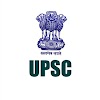LAXMIKANT POLITY NOTES:
📌 ELEPHANTINE SIZE
🔸️ Critics stated that the Indian Constitution is too bulky and too detailed and contains some unnecessary elements.
🔸️Ivor Jennings observed that the Provisions borrowed were not always well - selected and that the constitution, generally speaking was too long and complicated.
📌 A CARBON COPY OF THE 1935 ACT.
🔸 Critics said that the framers of the constitution have included a large number of the provisions of Government of india Act of 1935 into Constitution.
🔸 Hence, they called the Constitution as a Carbon copy of the 1935 Act or an Amended version of the 1935 act.
📌A BORROWED CONSTITUTION
🔸 Critics opined that the Constitition contains nothing new and original.
🔸 They described it as :-
• Borrowed constitution.
• Bag of borrowing.
• Hotch - potch constitution.
• Patchwork of several documents of the world constitution.
🔸 However this criticism is illogical as Framers of Constitution made necessary modification in the features borrowed from other constitution for suitability to the indian constitutions.
📌 DIRECTIVE PRINCIPLES OF STATE POLICY.
🔸 According to Ambedkar, the DPSPs is a novel feature of Indian constitution.
🔸 They are enumerated in Part IV of the Constitution.
🔸 They can be classified into 3 broad categories - Socialist, Gandhian, and Liberal-Intellectual.
🔸 The DPSPs are meant to promote the ideal of Social and Economic democracy.
📌 DRAWN FROM VARIOUS SOURCES.
🔸 Constitution of India has borrowed most of the provision from the constitution of various other countries as well as from GOI ACT of 1935.
🔸 Structural part of the constitution is, to large extent, derived from the GOI ACT of 1935.
🔸 Philosphical part derived from American and Irish constititions.
• E.g., Fundamental rights and DPSPs.
🔸 Political part derived from British constitution.
• E.g., Principle of Cabinet govt. Etc
🔸 Other provisions drawn from constitution of Canada, Australia, Germany, USSR, France, South Africa, Japan and so on.
📌 INTEGRATED AND INDEPENDENT JUDICIARY.
🔸 Constitution establishes a judicial system that is integrated as well as independent.
🔸 Supreme court stands at the top of integrated Judicial system in the country.
🔸 Below it there are High courts at state level.
🔸 Under a High court there is a hierarchy of Subordinate courts and other lower house courts.
🔸 Supreme court is a federal court, the highest court of appeal, the guarantor of the Fundamental rights of the Citizens and guardian of Constitution.
📌 FEDERAL SYSTEM WITH UNITARY BIAS.
🔸 Constitution established Federal system of Government.
🔸 It contains all usual features of a Federation like - Two government, Division of Powers, written constitution, Supremacy of constitution, rigidity of constition etc
🔸 Indian Constitution also contains a large number of unitary or non-federal features like Strong centre, Single constitution, etc.
🔸 However, Federation nowhere used in Constitution.
🔸 Article 1 describes India as a Union of states.








